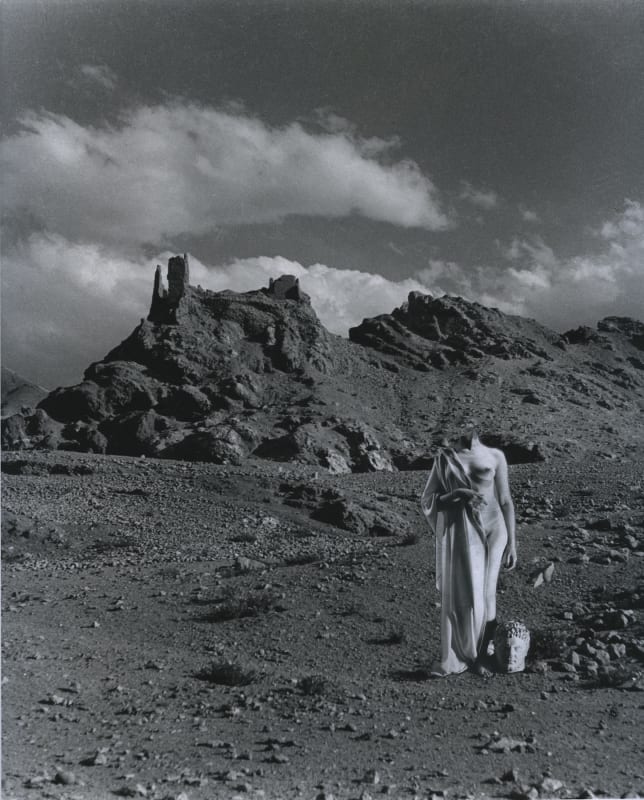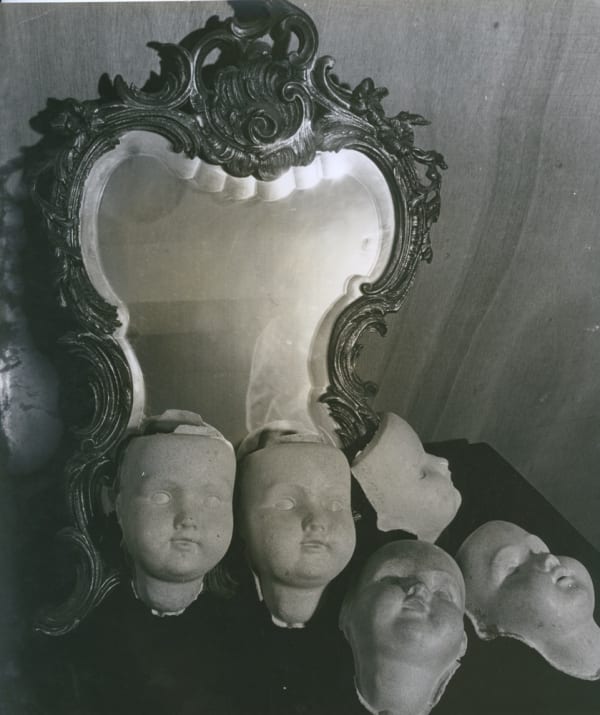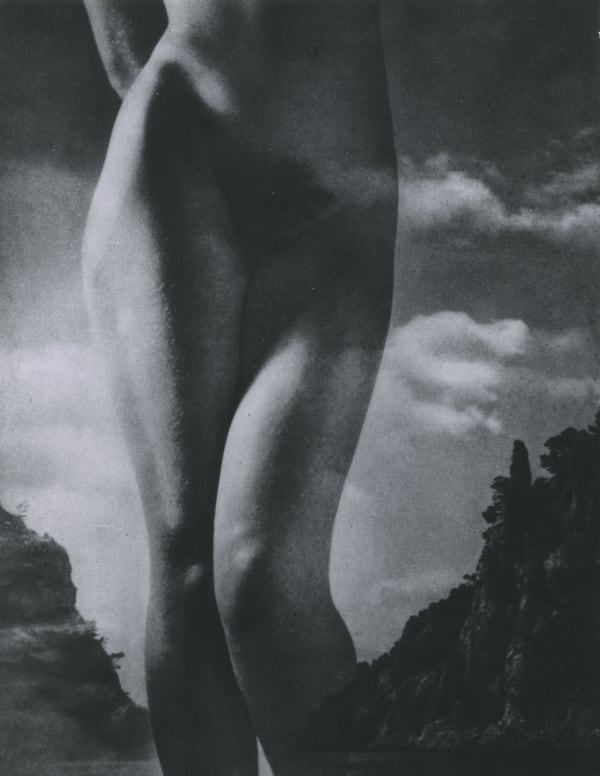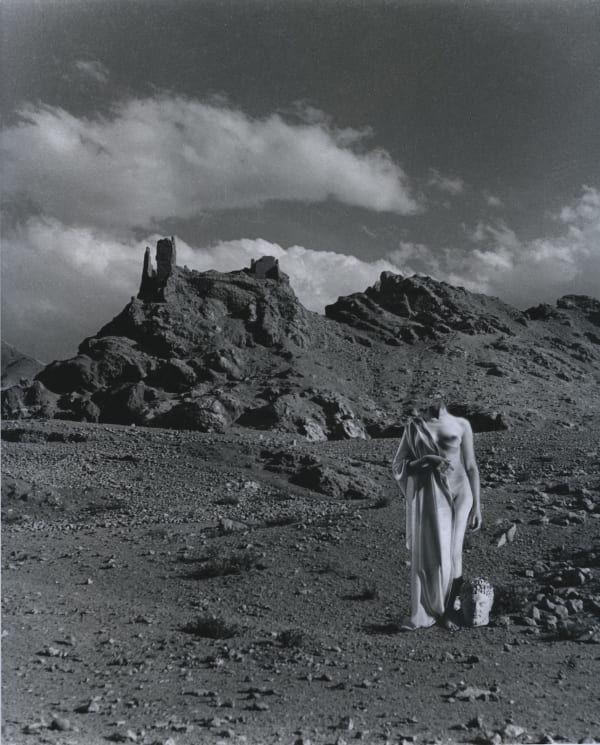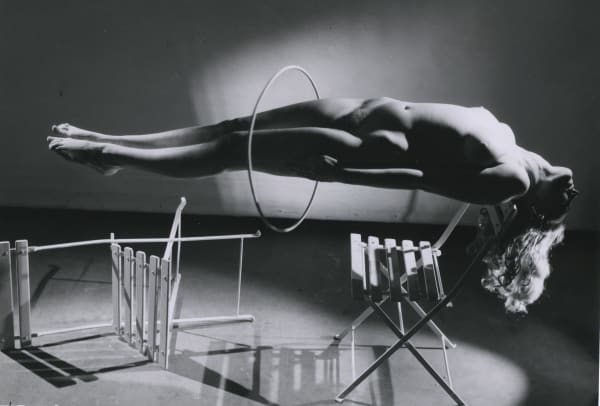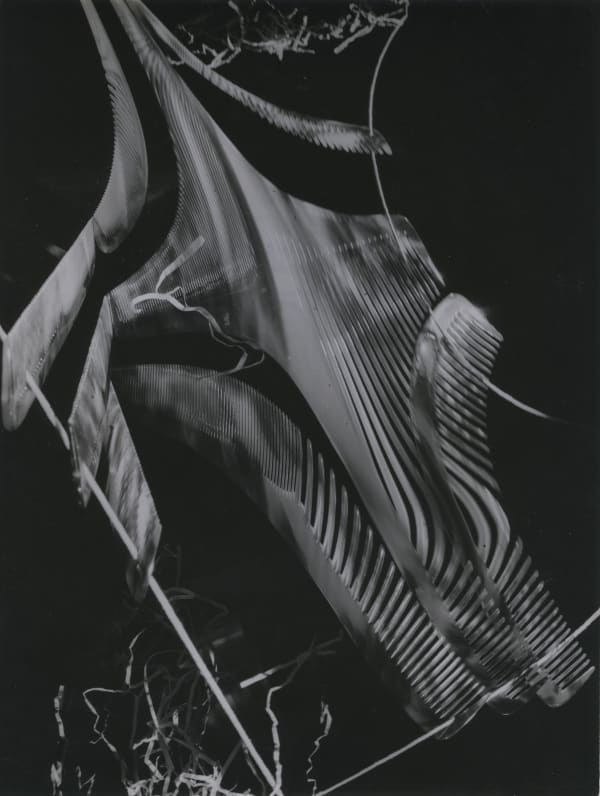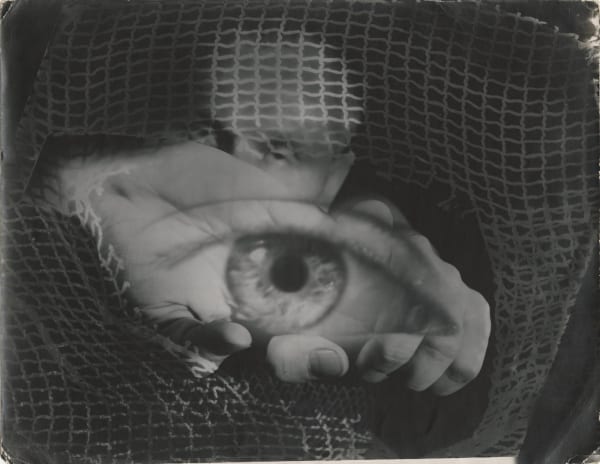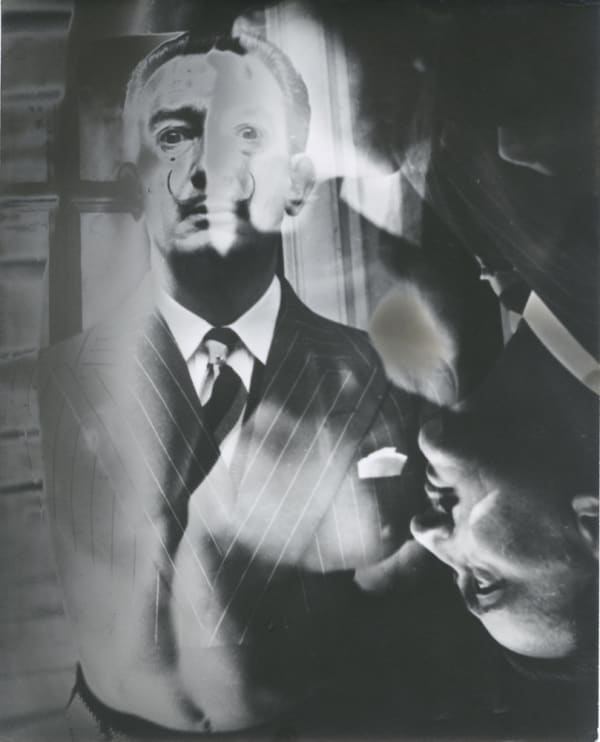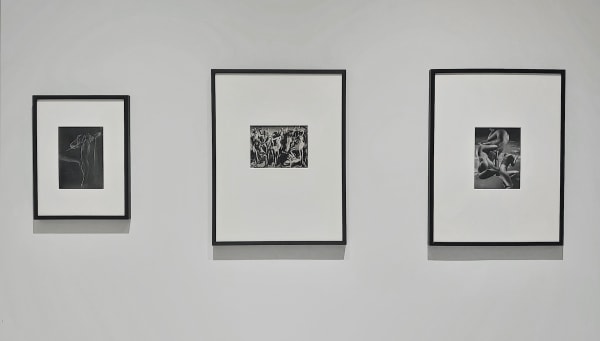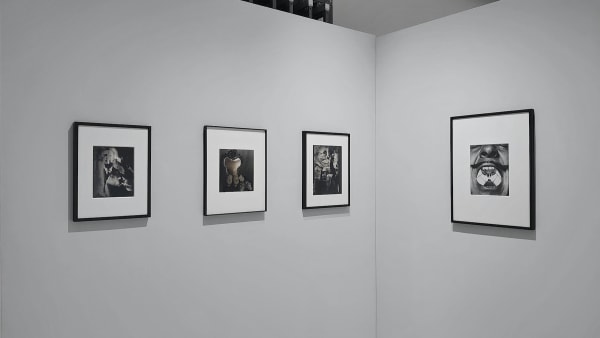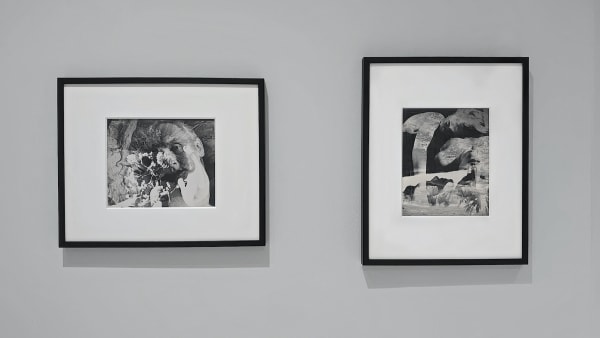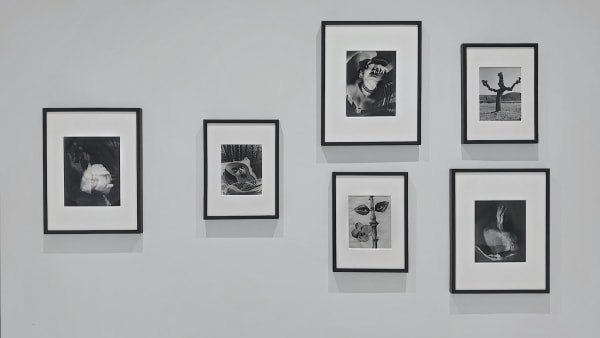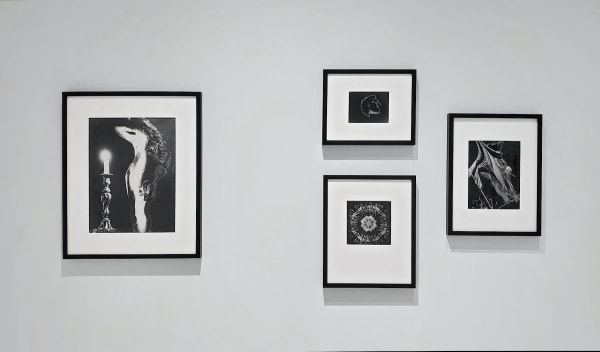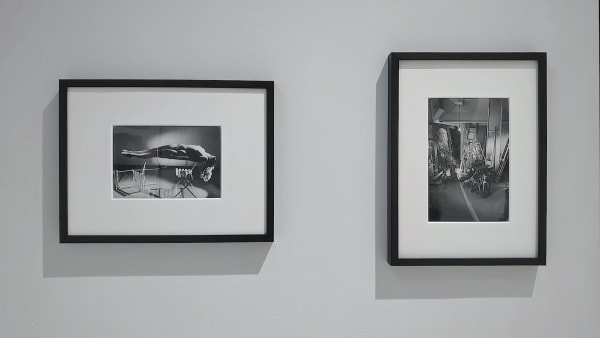Bordering the Real: Surrealist photographs
Les Douches la Galerie is pleased to present Bordering the Real, a group show exploring the importance of the photographic medium in surrealist practices from the late 1920s to the 1950s.
Featuring the work of 12 artists, the exhibition gathers some 40 photographic prints that reflect on the uncanny in a fragmented figure, a simple object or a lost landscape.
Featuring works by:
Denise Bellon, Ruth Bernhard, Pierre Boucher, Marc Foucault, Philippe Halsman, Lucien Lorelle, Pierre Molinier, Jean Painlevé, Willy Ronis, André Steiner, Val Telberg and Raoul Ubac
-
 Denise Bellon, Natures mortes, poupées, c. 1930-1940
Denise Bellon, Natures mortes, poupées, c. 1930-1940 -
 Pierre Boucher, Sans titre, 1932
Pierre Boucher, Sans titre, 1932 -
 Pierre Boucher, Dadès, 1936
Pierre Boucher, Dadès, 1936 -
 Lucien Lorelle, Femme en lévitation, 1947
Lucien Lorelle, Femme en lévitation, 1947
-

Fortes impressions
Télérama, 23 March 2022 This link opens in a new tab. -

Aux Douches Galerie, deux valent mieux qu'une
Julien Hory, Fisheye, 10 March 2022 -
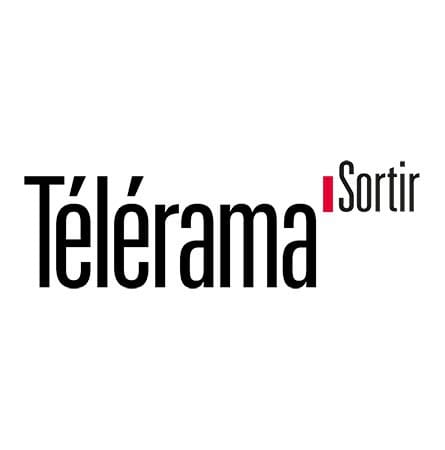
Aux frontières du réel
Télérama Sortir, 8 March 2022 This link opens in a new tab. -
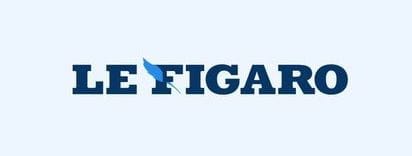
Photos surréalistes, cocktails, nouveau Mob house... Une semaine pleine de surprises
Sophie de Santis, Le Figaro, 1 March 2022
Bordering the Real
Therefore, I am defining it once and for all: SURREALISM, n. Psychic automatism in its pure state, by which one proposes to express -- verbally, by means of the written word, or in any other manner -- the actual functioning of thought. Dictated by the thought, in the absence of any control exercised by reason, exempt from any aesthetic or moral concern.
André Breton, Manifesto of Surrealism, Paris 1924
‘Photography is one of the enigmas that sprang up on surrealism’s path’, declared the authors of the introduction to the catalogue for La Subversion des images [The Subversion of Images][1], the vast exhibition staged at the Centre Pompidou in 2009 to encompass the entire field of images (photography and film) from the artistic trend born in the 1920s which has long influenced the creative arts within France and beyond.
It is an enigma for there are no theoretical writings on photographic images in the entire surrealist oeuvre despite the fact that the movement influenced the work of some of the most eminent photographers such as Man Ray, Raoul Ubac and Hans Bellmer.
There was no official surrealist photographer[2] (apart from Jacques André Boiffard), but the surrealists used photography in all its forms and in complete freedom in the movement’s revues, books and artistic production. It became so familiar to them that they did not bother to theorise about it. In his Manifesto of Surrealism (1924), André Breton only afforded images a few lines of text[3].
Surrealism and photography are ‘an illegitimate and unpredictable couple… because at that time, photography claimed the crudest form of realism… while surrealism clung to pure psychic automatism, dreams and the magical’[4]. The images that were made are very diverse, ranging from photomontage and double exposure to seemingly ordinary shots that ‘reveal the magical happenstance of urban wanderings’[5]. Some overpower reality or exude a transgressive, subversive power.
The stylistic definition of surrealist photography takes after the explosiveness and diversity of individual practises, since it involves constantly renewed experimentation. Photography is in the service of the imagination freed from established categories (nudes, still lifes, reportage, etc.). It finds its definition through the effects it produces on the viewer.
‘Surrealist photography’ makes visible what lies beyond the real; it is a ferryman, giving access to the world of the subconscious and of dreams. An image that instils us with desire reveals some of our suppressed dreams and disrupts our classic representations, leading us down paths we dared not take or did not even know existed.
Though photography is meant to be anchored in reality, the slippage that is revealed creates uneasiness and confusion. The mechanism that the artist imposes on us causes attraction and repulsion for their image. The tension between two subjects that by chance end up together leads to a feeling of insecurity.
Veiled eroticism, the uncanny, explosante-fixe, scopophilia, strange ordinariness… the lexical field that attempts to circumscribe surrealist photography is broad, just as the photographers who were influenced by that new creative space and who in turn contributed to it.
We present here a few of those photographers, a part of whose work belongs to the surrealist photography of the 1930s to 1950s: Denise Bellon, Pierre Boucher, Marc Foucault, Lucien Lorelle, Jean Painlevé, Pierre Molinier and Raoul Ubac in France and Philippe Halsman, Val Telberg, Ruth Bernhard in the United States.
Éric Rémy
Exhibition Curator
[1] Quentin Bajac, Clément Chéroux, Guillaume Le Gall, Philippe-Alain Michaud, Michel Poivert, La Subversion des images (Paris: Paris édition centre Pompidou, 2009).
[2] Manifesto of Surrealism (original published in 1924), the members who ‘have performed acts of ABSOLUTE SURREALISM: Messrs. Aragon, Baron, Boiffard, Breton, Carrive, Crevel, Delteil, Desnos, Eluard, Gérard, Limbour, Malkine, Morise, Naville, Noll, Péret, Picon, Soupault, Vitrac’.
[3] ‘In those days, a man at least as boring as I, Pierre Reverdy, was writing: The image is a pure creation of the mind. It cannot be born from a comparison but from a juxtaposition of two more or less distant realities. The more the relationship between the two juxtaposed realities is distant and true, the stronger the image will be — the greater its emotional power and poetic reality... – Nord-Sud, March 1918’, Manifesto of Surrealism.
[4] Christian Bouqueret, La photographie surréaliste (Paris: Actes sud, 2008).
[5] La Subversion des images, op. cit.
